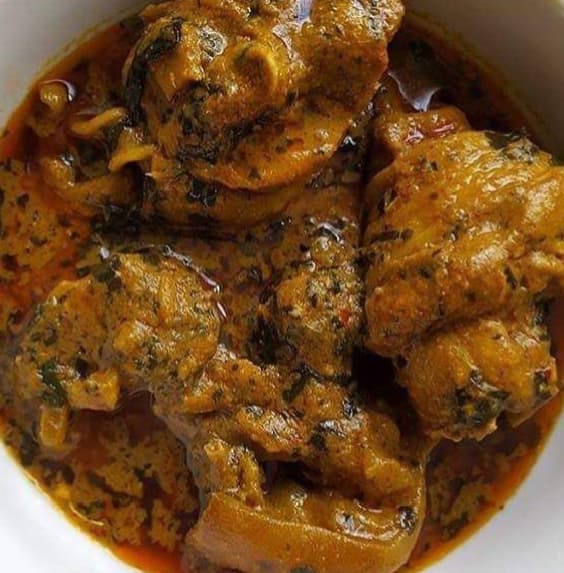Banga soup
₱600.00 Original price was: ₱600.00.₱500.00Current price is: ₱500.00.
Banga soup is a rich, aromatic, and flavorful palm nut soup originating from the Niger Delta region of Nigeria, particularly among the Urhobo and Itsekiri ethnic groups. It is a cherished cultural delicacy, often prepared for special occasions and accompanied by a starchy side known as usi or starch.
Distinctive base
The soup’s signature taste and beautiful reddish-orange color come from the thick, oily extract of the palm fruit. Unlike palm oil, which is a processed product, banga soup is made directly from the boiled, pounded, and squeezed pulp of the palm nut. In areas where fresh palm nuts are not available, canned palm fruit concentrate can be used as a substitute.
Complex flavors from native spices
What sets banga soup apart is its unique combination of indigenous spices, which infuse the soup with earthy, woody, and aromatic notes. A typical banga spice mix, sometimes sold pre-blended, includes a variety of native ingredients:
- Oburunbebe stick: A long, woody stick that imparts a distinctive flavor.
- Ataiko and Irugeje seeds: These are ground together to form a key part of the spice blend.
- Beletete leaves: Also known as banga leaves, these add a signature fragrance. Other leaves like scent leaf or bitter leaf are sometimes used as substitutes.
- Aidan fruit (Uyayak): This adds an additional layer of aromatic flavor.
Protein and seafood
Banga soup is typically cooked with a variety of protein sources. Proteins can include:
- Assorted meats like beef, goat meat, and offal
- Fresh fish, especially catfish
- Smoked or dried fish
- Prawns and crayfish
- Periwinkles and snails
Texture and consistency
The soup’s texture is rich, creamy, and semi-thick, with a distinct oily sheen from the palm nut extract. The final dish is a hearty and savory experience, with layers of flavor from the spices, peppers, and various meats and seafood. It is not necessarily defined by a single, overwhelmingly spicy or peppery taste, but rather a complex blend of heat and aromatic notes.
Traditional accompaniments
Banga soup is not eaten alone but is traditionally served with a side dish called a “swallow,” which is used to scoop up the soup.
Be the first to review “Banga soup” Cancel reply
No more offers for this product!
General Inquiries
There are no inquiries yet.


Reviews
There are no reviews yet.